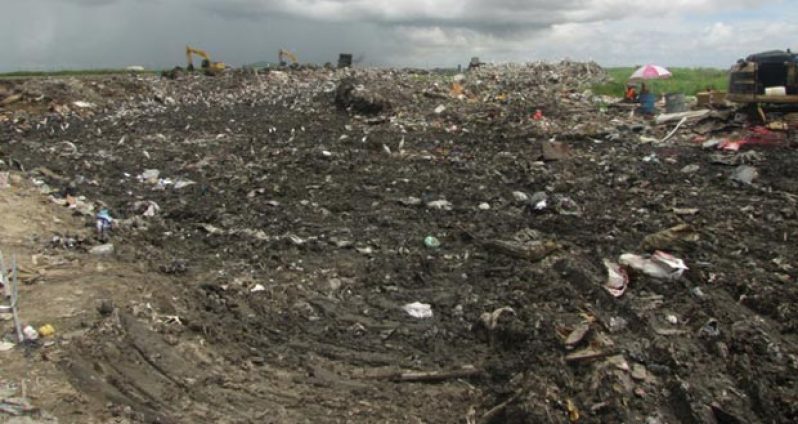–facility built to receive 6,000 tonnes of waste per month, but receives 10,000+ tones per month
DESIGNED to receive 6,000 tonnes of solid waste per month, the Haags Bosch Sanitary Landfill (HBSL) is currently processing more than 10,000 tonnes per month; and its construction is still a work in progress.Head of the Georgetown Solid Waste Management Team, Mr. Gordon Gilkes, said that despite the pressure of operating and constructing at the same time, the work was progressing satisfactorily.
The HBSL, he disclosed, is intended to occupy sixty-four acres out of a hundred acres behind Eccles on the East Bank of Demerara, and the facility is being built in four stages.
Each stage, or cell, is intended to occupy sixteen acres.
The HBSL is sandwiched between Plantation Peters Hall on the southern side of East Bank Demerara, and Agricola on the northern side, behind Eccles.
Mr. Gilkes said: “We are, at the moment, at about 60% of Cell # one.” He pointed out: “It should be remembered that the operations of the HBSL were started prematurely, because of the situation at Le Repentir. The thing is that the operation and construction is being done at the same time.”
The HBSL commenced operation on February 1st, 2011, and has been receiving waste for about 33 months. Up to last week, Gilkes disclosed, the landfill had received in excess of 340,000 tonnes of waste. The HBSL is supposed to last for twenty-six years, but at the current rate of usage, it may last far less.
He said that the GSWMP is aware of more technologies today than when the HBSL was conceptualized.
“There are other technologies which can reduce the amount of waste that goes into landfills. Utilizing those, it is hoped, should extend the life of the HBSL as close as possible to 26 years.”
Ongoing work includes the construction of an Administration Building housing offices, canteen and workshop; a scale and scale-house, to weigh the incoming waste and categorize it; construction of internal access roads, and a storm-water management system.
A landfill gas management system is on the cards for some time in the future, because the facility is at the moment still too young to start producing gas. There are also plans to install a composting facility to help reduce the amount of bio-waste which goes into the landfill.
The HBSL is the main component of the GSWMP. It is financed to the tune of US7.7M dollars through a loan agreement entered into between the Government of Guyana (GOG) and the Inter-American Development Bank (IDB), which took effect from February 22, 2007.
Mr. Gilkes urged the public to reduce the amount of waste taken to the landfill by practising the 3 Rs; namely: Reduce, Reuse and Recycle.
(By Clifford Stanley)












